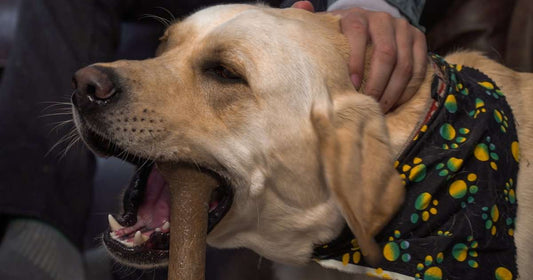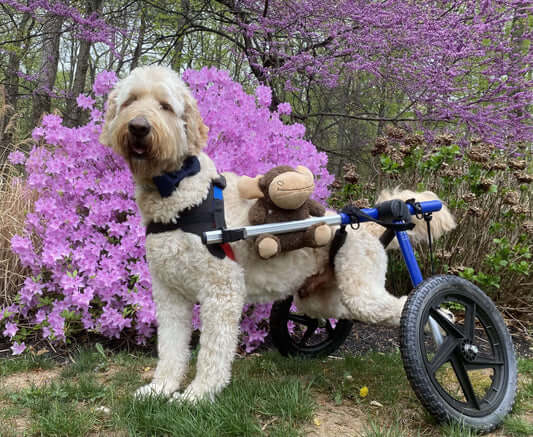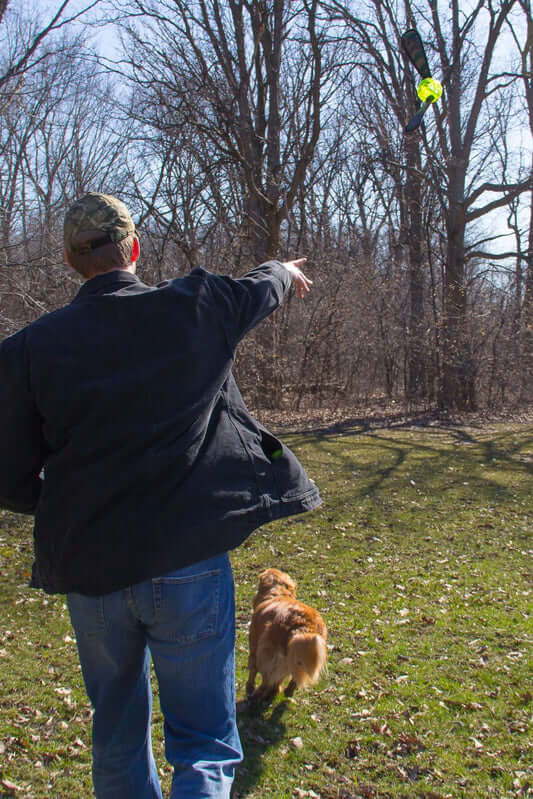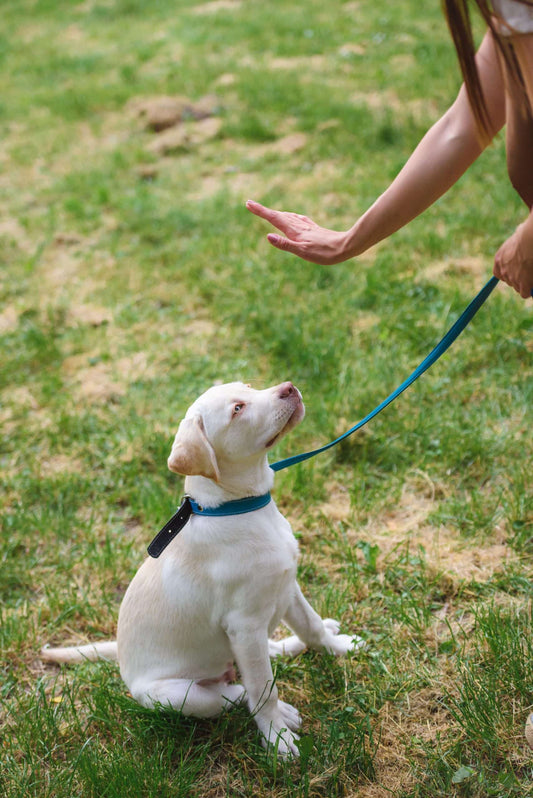HAVE A NEW PUPPY?
Think you’ll never get him to walk on a leash?
How to get a puppy to walk on a leash? According to expert trainers, teaching your puppy to walk on a leash is easy. Beware, not all dogs innately know how to walk politely on a leash. But with a bit of patience and perseverance, training your puppy to walk on a leash is an important skill to teach and one you’ll value daily.
First things first:
1. INTRODUCE THE COLLAR AND LEASH
When do puppies start walking on a leash? You can start teaching your puppy simple commands by the time they’re eight weeks old - that includes puppy leash training. But keep them indoors until they’re fully vaccinated before taking them on a leash outside.
When introducing puppy to a leash, first get your puppy familiar with wearing a collar or harness and a leash, by letting him wear them inside the house for short periods, like when you are giving him attention with indoor play, and giving him treats. By providing him with treats while wearing the collar and harness, he’ll begin to associate leash-time with a delicious reward.
2. TRAIN WITH A CUE
Decide how you’d like to introduce your puppy to a sound that means “treats are coming” by using a verbal word, or sound – perhaps a click with the tongue. Take him to an undistracted area where the two of you can be alone and while he is wearing the collar/leash make the sound, let’s say it’s a “click” and when he turns towards you, reward him with a treat.
Repeat. Repeat. Repeat. Leash training a puppy is all about practice. Soon he’ll be not only glancing your way but anxiously coming toward you for the treat.
3. ENSURE HE COMES TOWARD YOU
While you have puppy walking on leash, back up a few steps and reward him when he comes to you. Continue with the progression until he comes within a few steps of you. Puppies have short attention spans so keep your beginning sessions short, and end before he gets exhausted from the game.
Continue to train your puppy to walk on a leash in short sessions inside where there is little distraction. He’ll become accustomed to feeling the collar and leash and better prepared for when you take it “on the road.”
4. OUTSIDE
When you think he’s ready for the challenge, take him outside. Remember, puppy leash training means taking them outside where there are going to be many sights, sounds, and smells that will distract the puppy’s attention as it’s all so new and interesting.
Take small steps and be patient. When you notice he’s about to lunge toward something he may find intriguing, like a squirrel, bunny, flying bug, or even the smells of your garden, make your cue sound (click) and move a few steps away, then reward him with a treat for following you.
5. SHORT AND SWEET
Keep your walks short. Soon he will be walking on a leash nicely, but as he grows and experiences new distractions, you might run into new issues like pulling in another direction, and thrusting toward his prey. Stand your ground. Train puppy to walk on leash, but also to stay still.
Refuse to move until he comes back to you. No need to jerk the leash, you do not want to drag your dog along with you. Sometimes a front-hook harness or head halter is a better alternative to a collar for dogs who tend to pull.
6. REMEMBER…
Stay alert and be prepared for distractions. If your puppy starts to bark, it may be a lack of exercise. So taking him on short walks often and providing him with mental and physical stimulation is key. If your leash-walking puppy is loud and likes to, use the same theory to turn their attention towards you.
With a little patience, gradually you’ll reduce the number of treats. Just in case, keep a few treats handy at all times so you can reinforce good leash-walking behavior with every walk.














